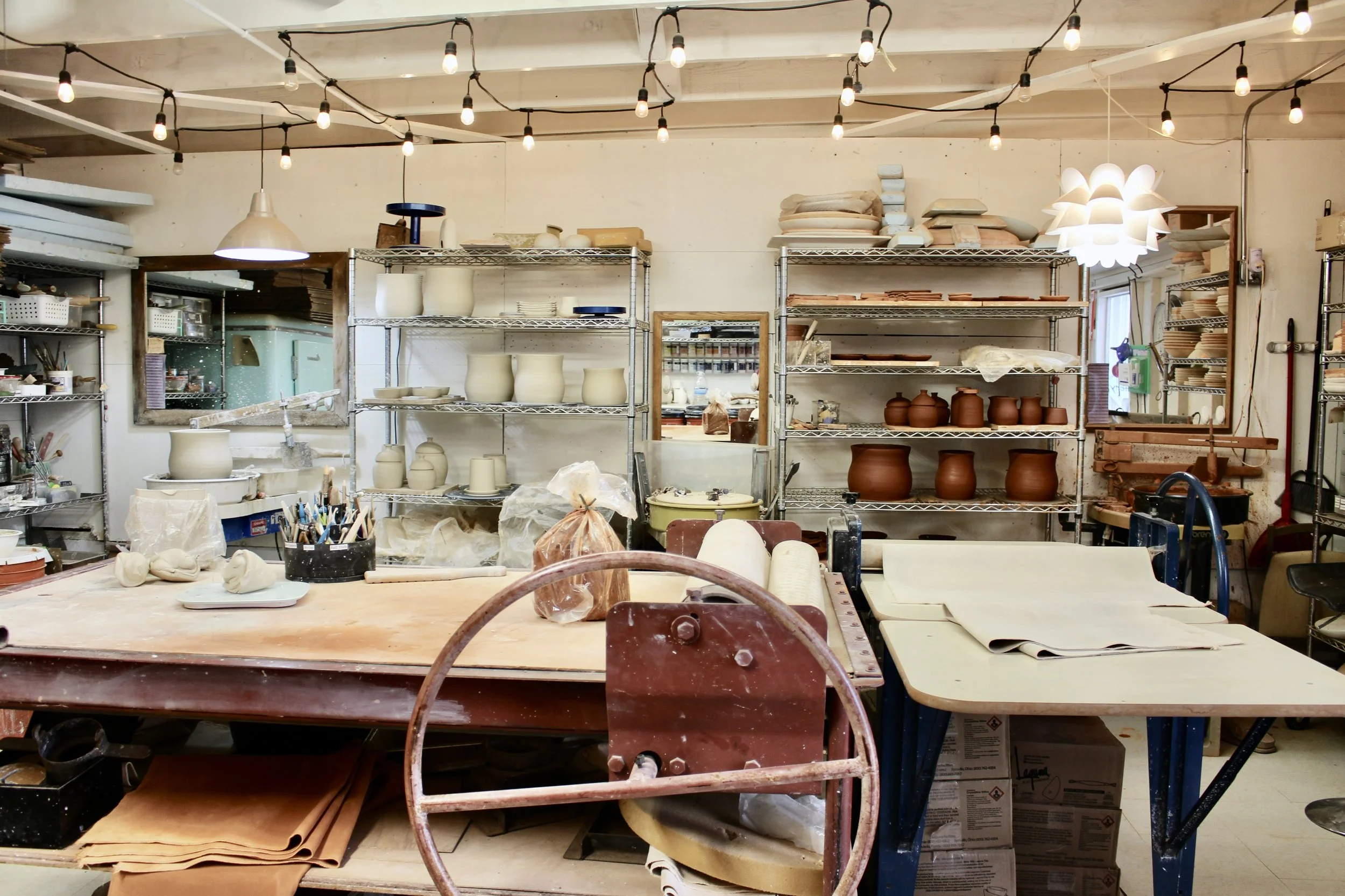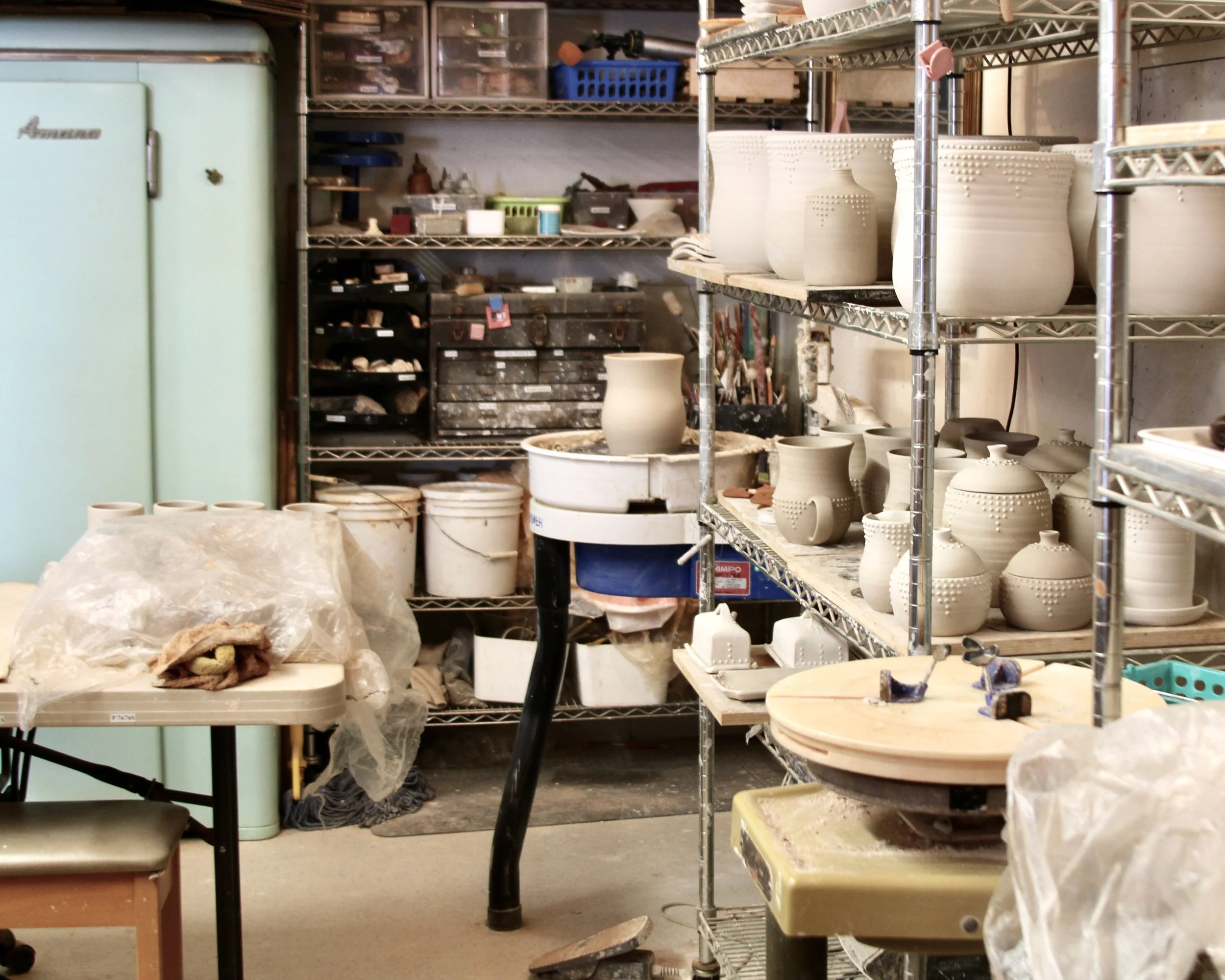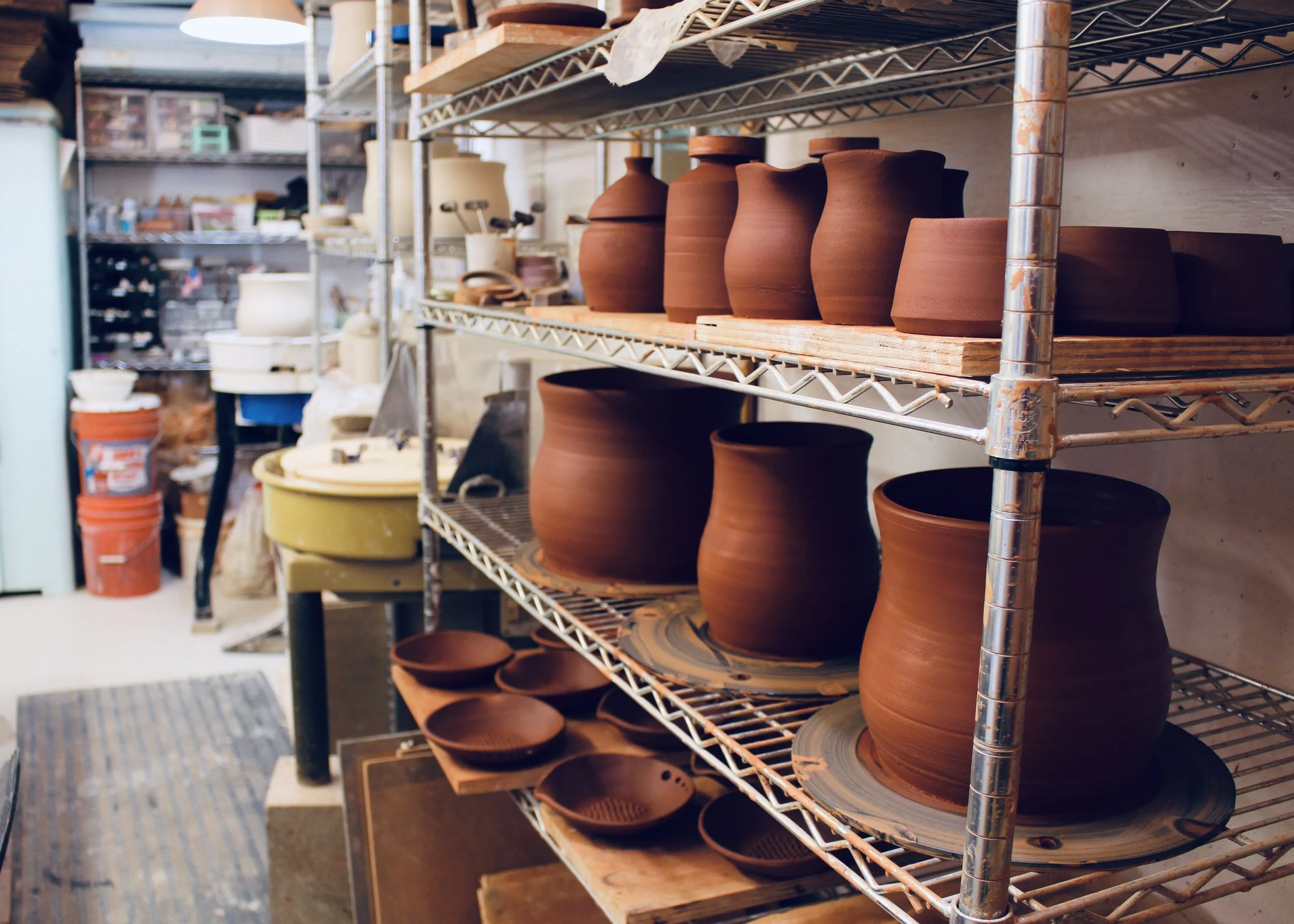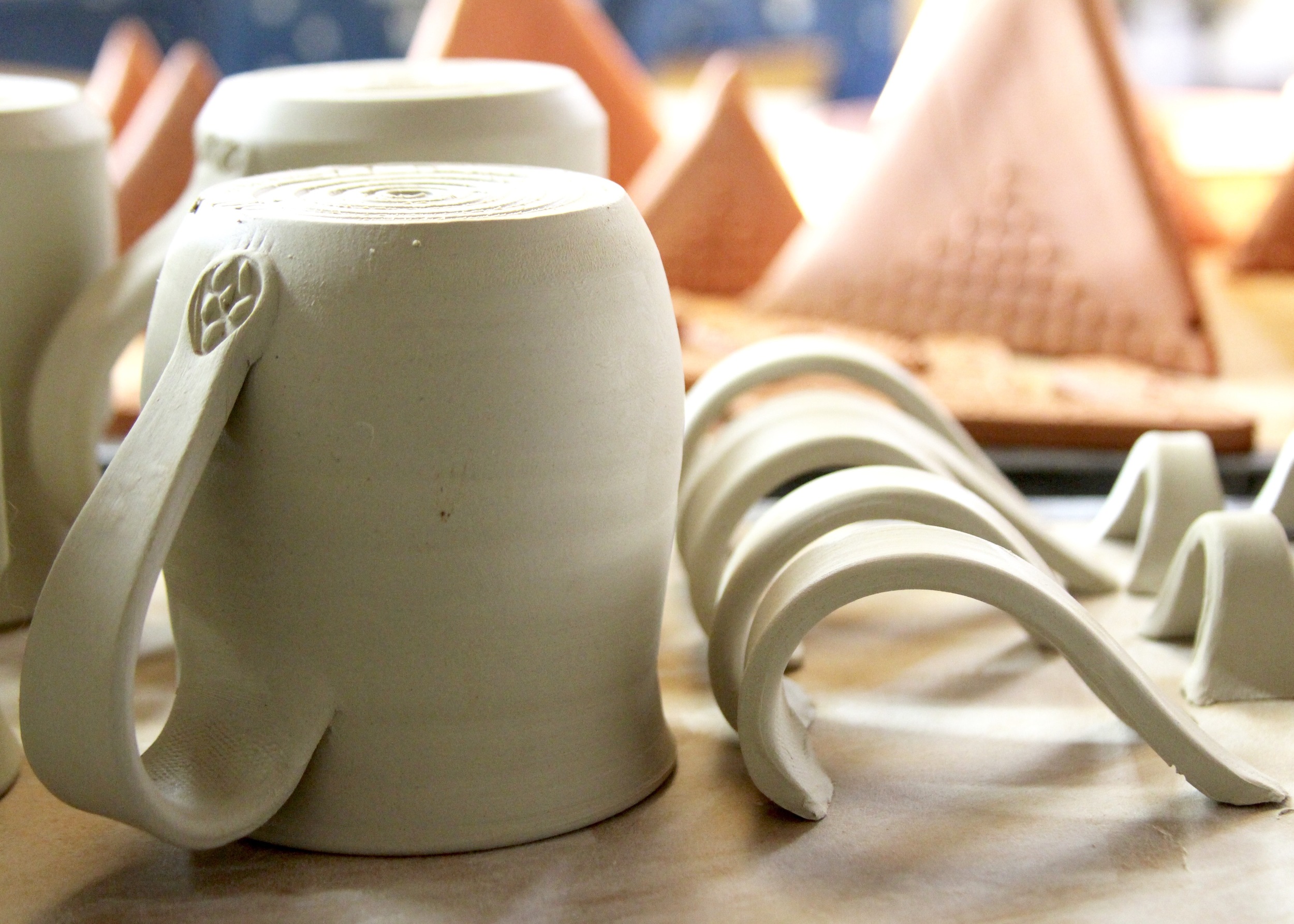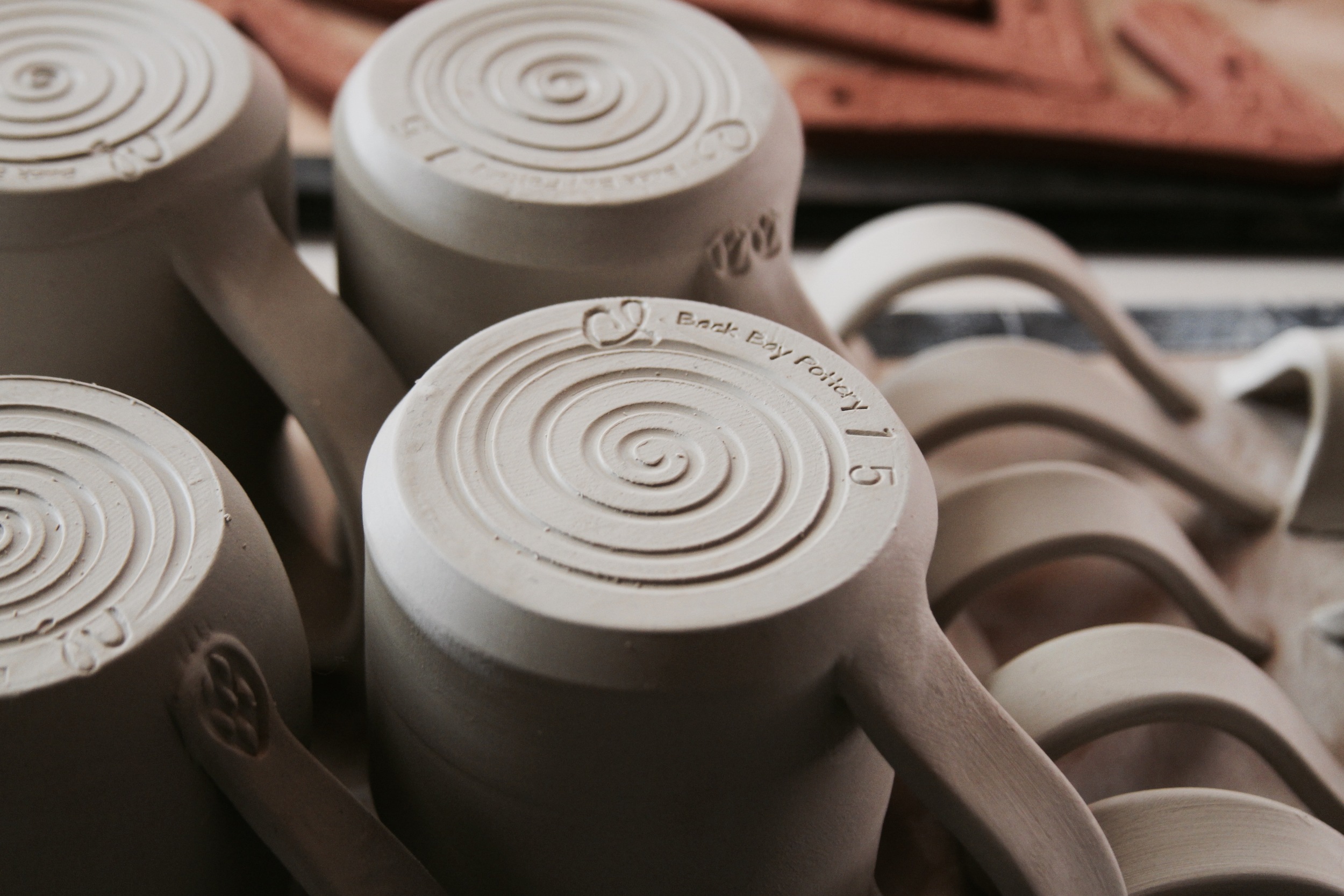Pottery Studio Tour
My studio is in a constant state of transformation. Here are some photos of what may be going on at any given time...
Making pottery is a labor of love... There is lots of good hard work involved. Its not only about making and firing the pottery but other studio chores like cleaning, mixing glaze, reclaiming clay, resurfacing kiln shelves, loading and unloading the kilns, shipping & organizing. I know I forgot a few things...
Here is what is involved in the making of the pottery.
1. PREPARE THE CLAY - The clay is prepared by wedging it to remove air bubbles and achieve a uniform consistency, which ensures structural integrity.
2. CLAY BODY IS FORMED – A potter can form their product in many ways. For example, you can “throw” clay on a potters wheel, another method is called “pinching” which uses the fingers to mold a ball of clay into a desired shape. “Slab building” or “hand-building” involves rolling out flat pieces of clay and forming them by hand.
3. DECORATING – My three favorite ways of decorating are slip trailing, carving & stamping. There are many more ways to get designs into clay & I love to try them all.
4. SMOOTHING / FINISHING – When the clay has firmed up it is called “leather hard”, At this stage, the clay is firm enough to hold its shape without slumping, yet retains sufficient moisture to allow for carving, trimming and smoothing. All the rough edges are soothed with a rasp, green scrubby and sponge.
5. DRYING – Takes 7-10 days. The clay must be left to completely dry before going into the kiln. If there is moisture left in the clay it may explode in the kiln. The clay shrinks as it dries.
6. BISQUE FIRING- Takes about 24 hours. The ceramic pottery pieces are put in the kiln for the 1st firing. This is when the clay is turned into a stone. The kiln takes between 6-8 hours to reach about 1,823°F. It takes about 12 hours to cool.
7. GLAZING – After cooling, the piece is ready for glazing, where a liquid glaze is applied to create a decorative and functional surface. Glaze can be applied in many ways, poured on, sponged on, painted on, dipped, and sprayed.
8. GLAZE FIRING- 24 hours. The pottery pieces go in the kiln for their last firing. This time the kiln temperature reaches approximately 2,232°F. The glaze turns into a glass-like coating and becomes one with the ceramic piece.
Sometimes I fire my pottery a 3rd or 4th time to get a desired result.
Rack of drying pottery...

